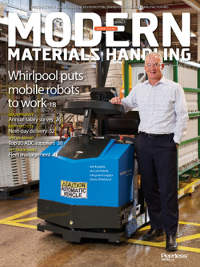Packaging Corner: Embracing polybag pouches
Automated opening, marking and sealing of shipping pouch bags boosts productivity while reducing shipper costs.
Latest Material Handling News
New resource center for weighing and dimensioning Protective packaging roundup MODEX C-Suite Q&A: Troy Donnelly, Senior VP of Sales, Marketing, and Application, DMW&H When Just-in-Time Just Doesn’t Work Recycling coastline plastic into premium reusable packaging More ColumnsMore e-commerce and omni-channel retailers are transitioning from corrugated boxes to plastic pouches for shipping non-fragile items. The trend is driven by lower per-unit and shipping costs associated with the lighter weight packaging (particularly for shippers facing dimensional weight charges from parcel carriers), the reduced amount of storage space the bags require compared to cardboard, and the ability to imprint full color branding messages on the bags.
Contrary to popular perception, the polybag pouches are more sustainable than corrugated boxes, says Chris Rempe, director of global marketing at Automated Packaging Systems.
“Manufacturing the bags requires less energy while producing significantly less carbon dioxide,” Rempe explains. “Further, they can be recycled, with more curbside programs and retail stores accepting them.”
However, packaging items in a bag in a fully manual operation is not especially efficient, with operators typically opening, inserting, labeling and sealing a bag at a rate of 1.5 per minute. And, with qualified labor hard to find and retain, especially during the peak holiday shipping season, automating most of the process can boost productivity to as high as eight pouches per minute, Rempe continues.
“We offer automated machinery that essentially removes bag handling from the equation,” Rempe says. “The operator scans a packing slip, which triggers the machine to print the shipping information directly on the bag to eliminate the adhesive label. The machine then presents the bag to the operator, holds it open, and then seals it after the operator places the product, packing slip and other marketing collateral inside.”
Models range from tabletop versions for low-volume applications—such as custom T-shirt printers—up to the company’s newest product, the Autobag 850S, which runs bags up to 22 inches wide to ship larger items.
“Customers typically select the machine that handles the bag size that fits the majority of their products, say 80%, and then package the outliers offline by hand,” Rempe says. “The biggest operations might deploy three machines handling three different bag sizes to package small, medium and large shipments.”
Related Video

Article Topics
Columns News & Resources
New resource center for weighing and dimensioning Protective packaging roundup MODEX C-Suite Q&A: Troy Donnelly, Senior VP of Sales, Marketing, and Application, DMW&H When Just-in-Time Just Doesn’t Work Recycling coastline plastic into premium reusable packaging Fresh food, anyone? RPCs protect in the supply chain Why Isn’t Your Loading Dock Connected to Your Supply Chain? More ColumnsLatest in Materials Handling
Registration open for Pack Expo International 2024 Walmart chooses Swisslog AS/RS and software for third milk processing facility NetLogistik partners with Vuzix subsidiary Moviynt to offer mobility solutions for warehouses Materials Handling Robotics: The new world of heterogeneous robotic integration BSLBATT is looking for new distributors and resellers worldwide Lucas Watson appointed CSO for Körber’s Parcel Logistics business in North America Hyster recognizes Dealers of Distinction for 2023 More Materials HandlingAbout the Author
Subscribe to Materials Handling Magazine

Find out what the world's most innovative companies are doing to improve productivity in their plants and distribution centers.
Start your FREE subscription today.
April 2024 Modern Materials Handling

Latest Resources











